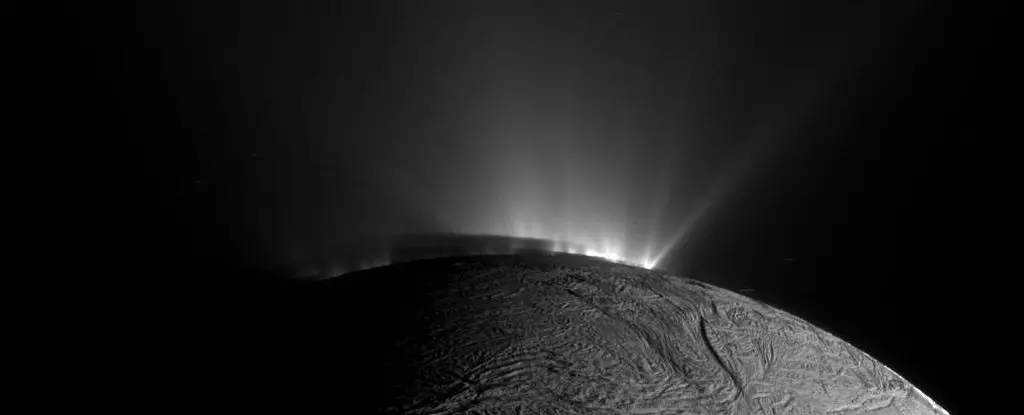Cronian moon Enceladus often goes unnoticed with its monochromatic appearance, overshadowed by Saturn’s magnificent rings and giant hexagon. However, appearances can be deceiving, as Enceladus has proven time and time again. Recent analysis indicates that this seemingly humble moon harbors a surprisingly high amount of organic molecules. The data collected by the Saturn Cassini probe reveals that Enceladus ejects various molecules, such as methanol, ethane, and molecular oxygen, from geysers originating deep within its icy surface. This discovery strongly suggests the possibility of Enceladus supporting biochemistry or even communities of microbes within its global ocean. Consequently, there is a growing call for a dedicated mission to Enceladus to unlock the mysteries and potentially discover extraterrestrial life.
The majority of our knowledge about Enceladus has emerged from the groundbreaking Cassini mission, which spanned from 2004 to 2017 and explored Saturn and its satellites. Prior to this mission, Enceladus remained an enigma. However, as Cassini detected and flew through plumes of mist erupting from cracks in Enceladus’ frozen surface, it uncovered the existence of a liquid ocean beneath. Subsequent analysis using Cassini’s Ion and Neutral Mass Spectrometer (INMS) instrument identified organic molecules in these plumes, including water, carbon dioxide, methane, ammonia, and molecular hydrogen. Nonetheless, due to the low mass resolution of the INMS, identifying less abundant species became challenging given the wide range of potential combinations. Consequently, the full composition of the plumes remained uncertain.
In a new study led by astrobiologist Jonah Peter from Harvard University and the NASA Jet Propulsion Laboratory, the team revisited the data from the INMS. They employed statistical modeling techniques to compare the data with a vast library of known mass spectra, aiming to determine the substances responsible for the patterns observed in the Cassini data. Their results not only confirmed previous findings but also unveiled a broader array of organic molecules, including hydrogen cyanide, acetylene, and propylene – compounds directly linked to prebiotic chemistry and the origins of life.
The evidence strongly suggests that Enceladus possesses an active hydrothermal environment. Its elliptical orbit around Saturn stretches and compresses the moon, resulting in internal heating. This thermal energy can escape through vents on the ocean floor, providing a hospitable environment for life despite the great distance from the Sun. This phenomenon occurs within Earth’s deep oceans. At this stage, it remains uncertain whether the detected molecules signify the presence of life on Enceladus or if they are merely a collection of coincidental chemicals. Nevertheless, the exciting prospect remains that the findings could be of significant importance. Laboratory experiments conducted on Earth can be used to narrow down the possibility of Enceladus hosting life. Still, the only definitive way to determine the existence of extraterrestrial life is through further exploration.
While several proposed missions to Enceladus are currently under consideration, no concrete plans have been finalized yet. However, with each new piece of evidence, we inch closer to exploring this alien moon and the potential discovery of extraterrestrial bacteria. The researchers conclusively state, “Our results indicate the presence of a rich, chemically diverse environment that could support complex organic synthesis and possibly even the origin of life.” With such astounding prospects, why should we delay any longer?
Enceladus, the seemingly unassuming Cronian moon, continues to astound scientists and space enthusiasts alike. Beyond its monochromatic exterior lies a world teeming with organic molecules, hinting at the possibility of biochemistry and even life itself. Thanks to the Cassini mission’s groundbreaking data, we have illuminated unique insights into Enceladus’ hidden chemistry. While uncertainties persist, the tantalizing prospect of extraterrestrial life drives the desire for future exploration. By unraveling the secrets of Enceladus, humankind edges closer to unlocking the mysteries of our universe and answering the age-old question of whether we are alone in the cosmos. The time to embark on this extraordinary journey is now.


Leave a Reply